There are many surprises hidden in the base of India compared than most of the countries whether they are natural wonders, beautiful architectural structures or ancient monuments or travel attractions. At indiaimagine, you have already read about many picturesque destinations, ancient sites, and ruins in India but never learned of caves which hold certain importance in the past of Indian history. These caves have always fascinated history buffs, scientists, and vacationers. The most interesting thing to consider about these caves is their architectural excellence which formed without using any modern technology in prehistoric times. Due to their appeal, many Indian caves are also listed under the UNESCO world heritage site.
In India, many caves are known for their religious faiths like Amarnath Caves in Jammu which are popular for Lord Shiva Lingam. Are you aware of famous caves in India which are a sight to behold?
So let’s check out some beautiful and most popular caves in India.
1. Ajanta and Ellora Caves – Maharashtra
Ajanta and Ellora Caves in Aurangabad district of Maharashtra are the most famous caves of all time. These caves are always named together but are two different sets of caves and that too located in different locations. Both are part of the UNESCO World Heritage Site and contain a list of Buddhist, Hindu and Jain monuments. The temple of Kailasha and nearby Ellora Caves, Bibi Ka Maqbara temple and Daulatabad fort, are the main tourist attractions in Aurangabad.
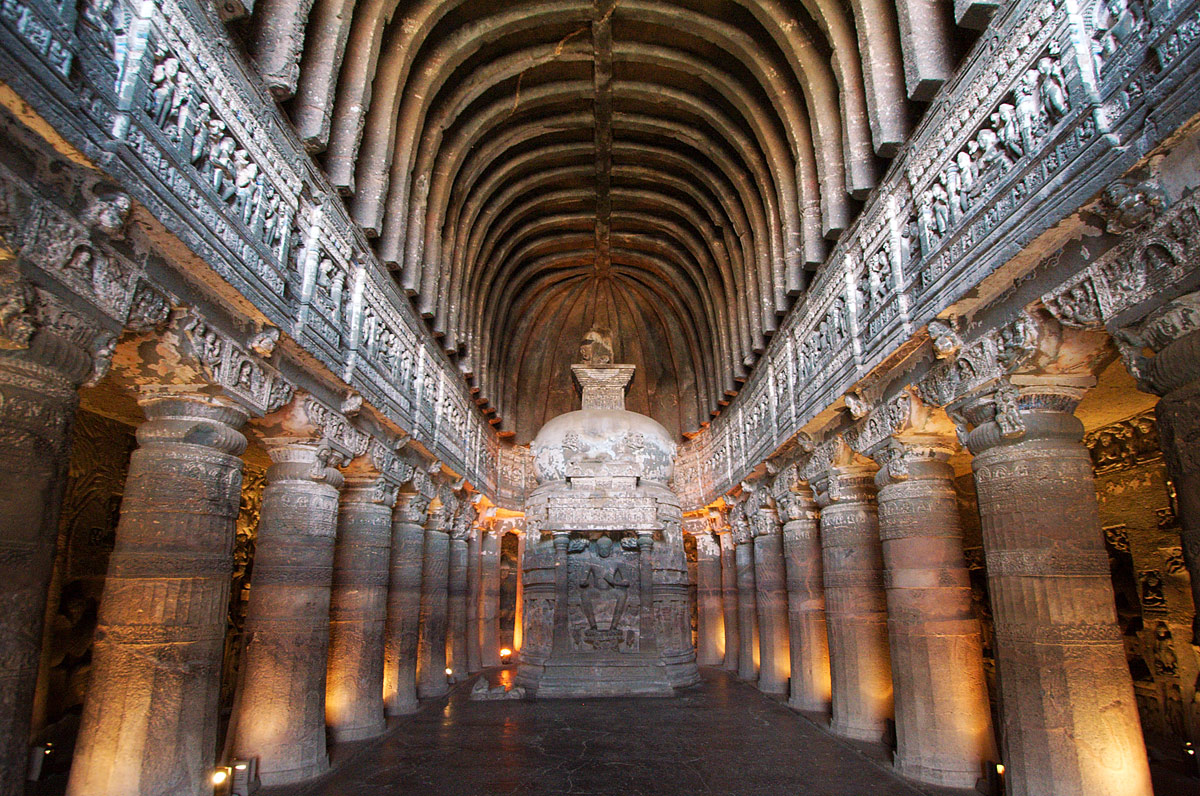
The caves of Ajanta are home to a variety of caves constructed between the 2nd and sixth centuries AD with numerous cave-temples. The caves of Ellora contain 34 caves with various temples and monuments, constructed between 6th and 11th A.D. Such caves are known for their architectural elegance, sculpture and unique character.
2. Elephanta Island Caves – Mumbai
This is a similar cave located in the Elephanta Island, on the Arabian Sea, close to Mumbai. The island gets its name from a massive elephant statue, which is now in a museum in Mumbai mainland.
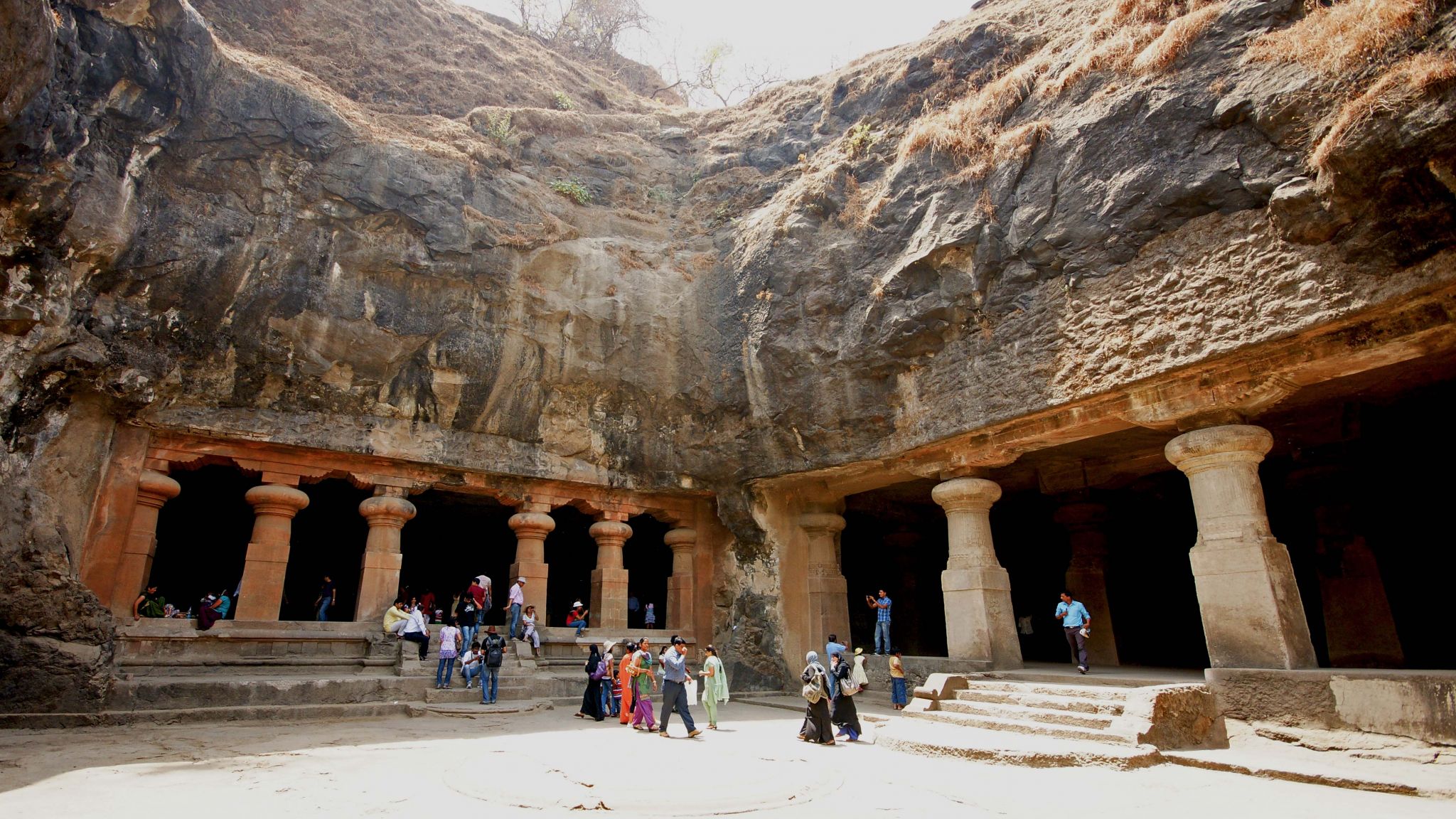
The caves are famous for pilgrimage weekend trips, cave exploration and photography. You can find numerous caves spread on this island. Many caves hold temples of Lord Shiva. For tourism purposes, the place is separated into the east wing and the west wing.
Also Read: Famous Hill-Station Near Mumbai And Pune – Lonavala
3. Badami Caves – Karnataka
The Badami caves are also amongst the top tourist attractions in Karnataka. The caves date back to the 6th and the 7th century AD and are situated at the mouth of a gorge. There are total four caves out of which three have Brahmanical temples and one has Jain temple.
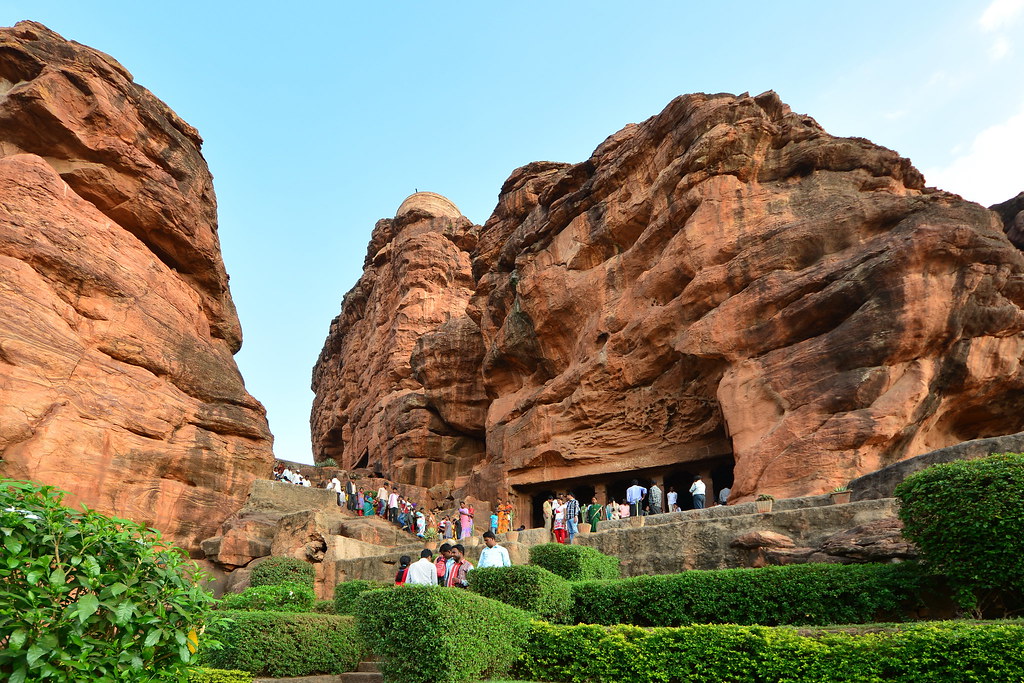
Every cave is beautifully carved and shows images and sculptures of Hindu gods, Mahavira, and other Jain Tirthankaras. These caves had earlier been identified as Vataapi Badami, the capital of the early Chalukya dynasty. They are considered an example of Indian rock-cut architecture, particularly of the architecture of Badami Chalukya. The temples of Cave are connected by a steep trail with intermediate terraces that give a magnificent view over the city and the lake.
4. Borra Cave – Andhra Pradesh
Borra Caves are a natural spectacle ageing for more than 150 million years which are located in Visakhapatnam, Andhra Pradesh. The caves offer the spectacular sight of stalagmites and stalactites that are around 150 million years old. This cave holds a naturally formed Shiva Linga.
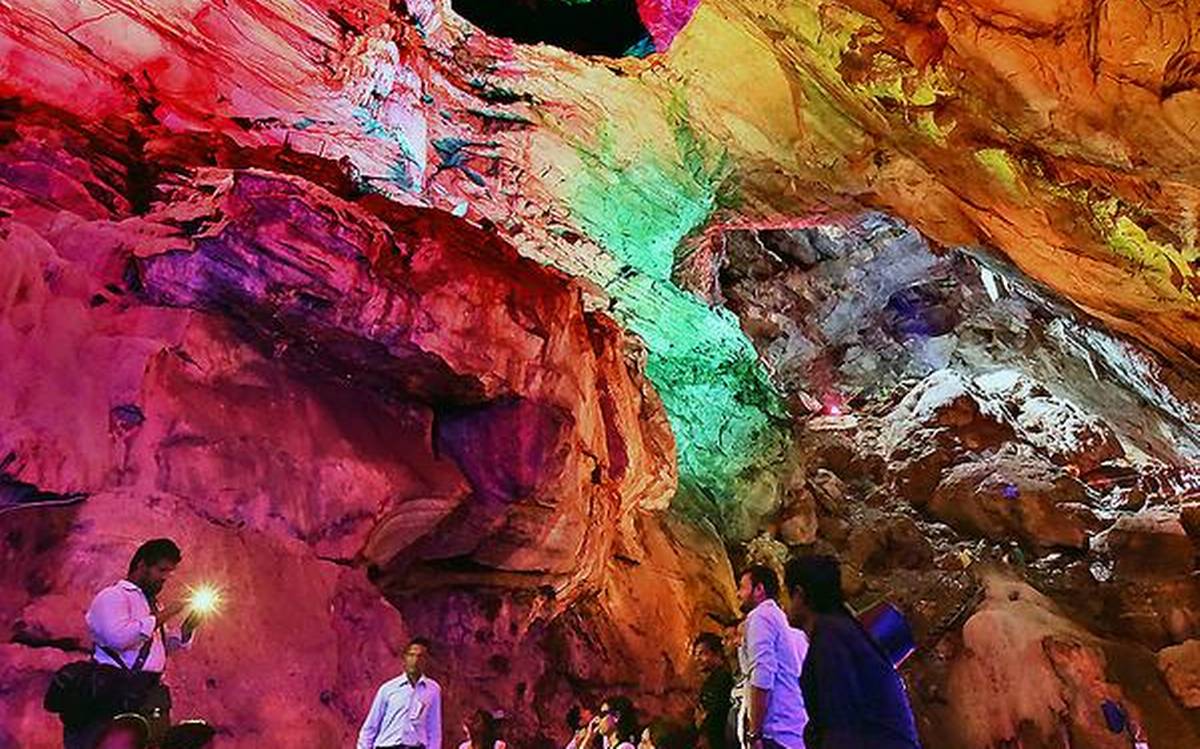
The tribal groups around the cave worship this natural god. The deposition of sedimentation in the cave produces several different objects such as the human brain, crocodile, shiva, mother and child etc. The Shiva Linga and Kamadhenu cow are the greatest of all.
Also Read: Top 5 Places To Visit In Andra Pradesh
6. Amarnath – Jammu & Kashmir
The Amarnath cave is one of the most prominent shrines in Hinduism, situated in the Indian state of Kashmir. The temple, dedicated to the god Shiva, is believed to be over 5,000 years old and forms an important part of ancient Hindu mythology. It has an icy stalagmite related to the Shiva Linga. It lies at an elevation of 3,888 feet and totally enclosed by snowy mountains though it is accessible only in summer.
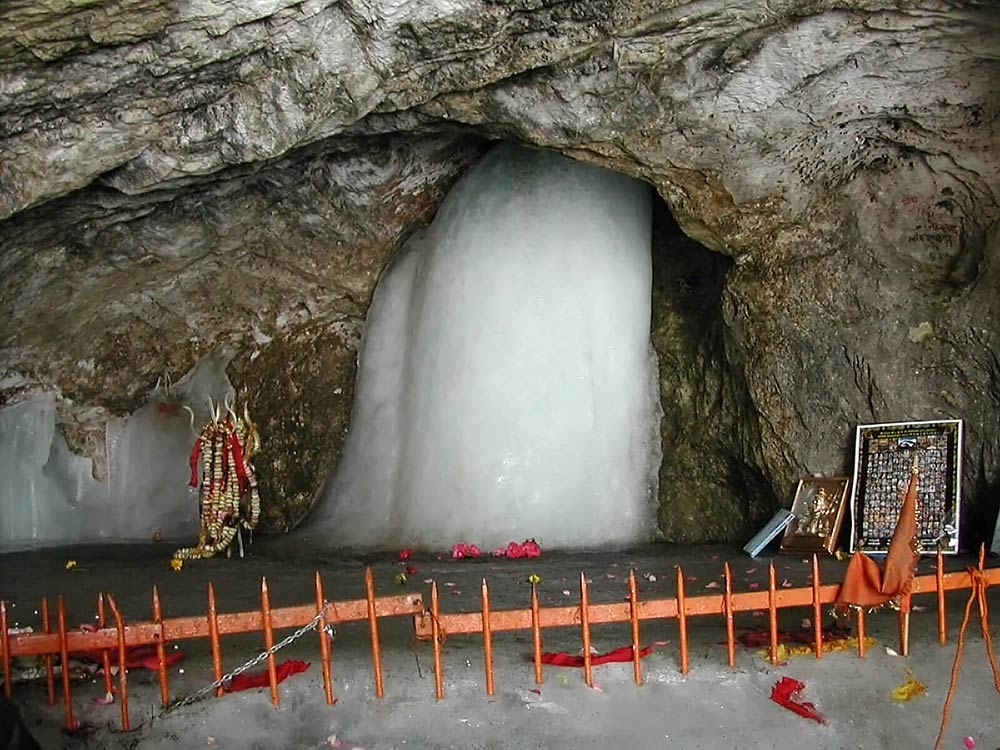
There is an ice stalagmite inside the Amarnath cave which is known to be of Lord Shiva Linga, which waxes from May to August afterwards and slowly declines. This lingam is expected to expand and shrink with the lunar phases. According to Hindu mythology, Shiva has demonstrated to his divine consort Parvati the secret of life and eternity.
7. Dungeshwari Caves – Bihar
Dungeshwari caves are located about 12 km from Bodhgaya in Bihar. These caves are significant in Buddhism as it is believed that Buddha meditated here. A golden statue of Buddha, another giant statue of Buddha and an idol of Hindu goddess Dungeshwari are present inside the three caves of Dungeshwari. Three caves have Buddhist shrines, where it is believed that Buddha had spent time meditating.
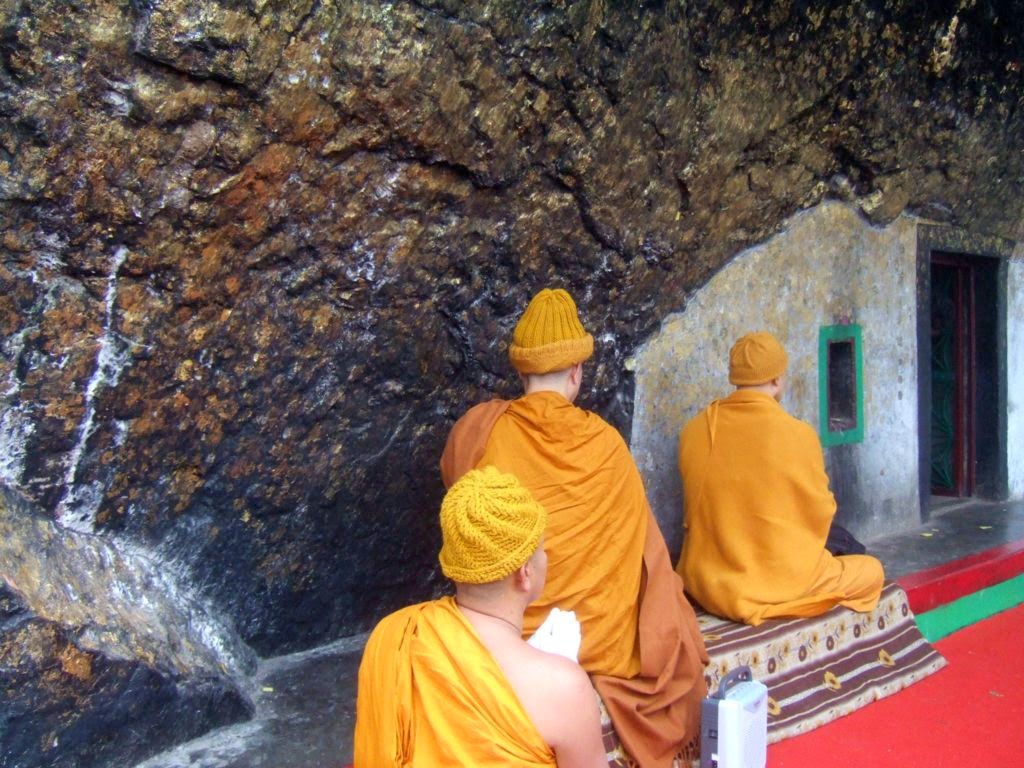
These caves are indeed one of the best places to visit in Bihar. Two small shrines were built to commemorate this significant event. Also, a golden statue of the emaciated form of the Buddha depicting the strict penance is enshrined in one of the cave temples and the other temple is a large Buddha’s statue. A Hindu goddess deity Dungeshwari is also placed inside the cave.
8. Tabo Caves – Himachal Pradesh
Tabo is a rising hill that contains a group of caves. Such caves are cut from the cliffs and are considered to have been used by Buddhist monks for meditation purposes. The monks are also thought to have used the Tabo caves during the winters.
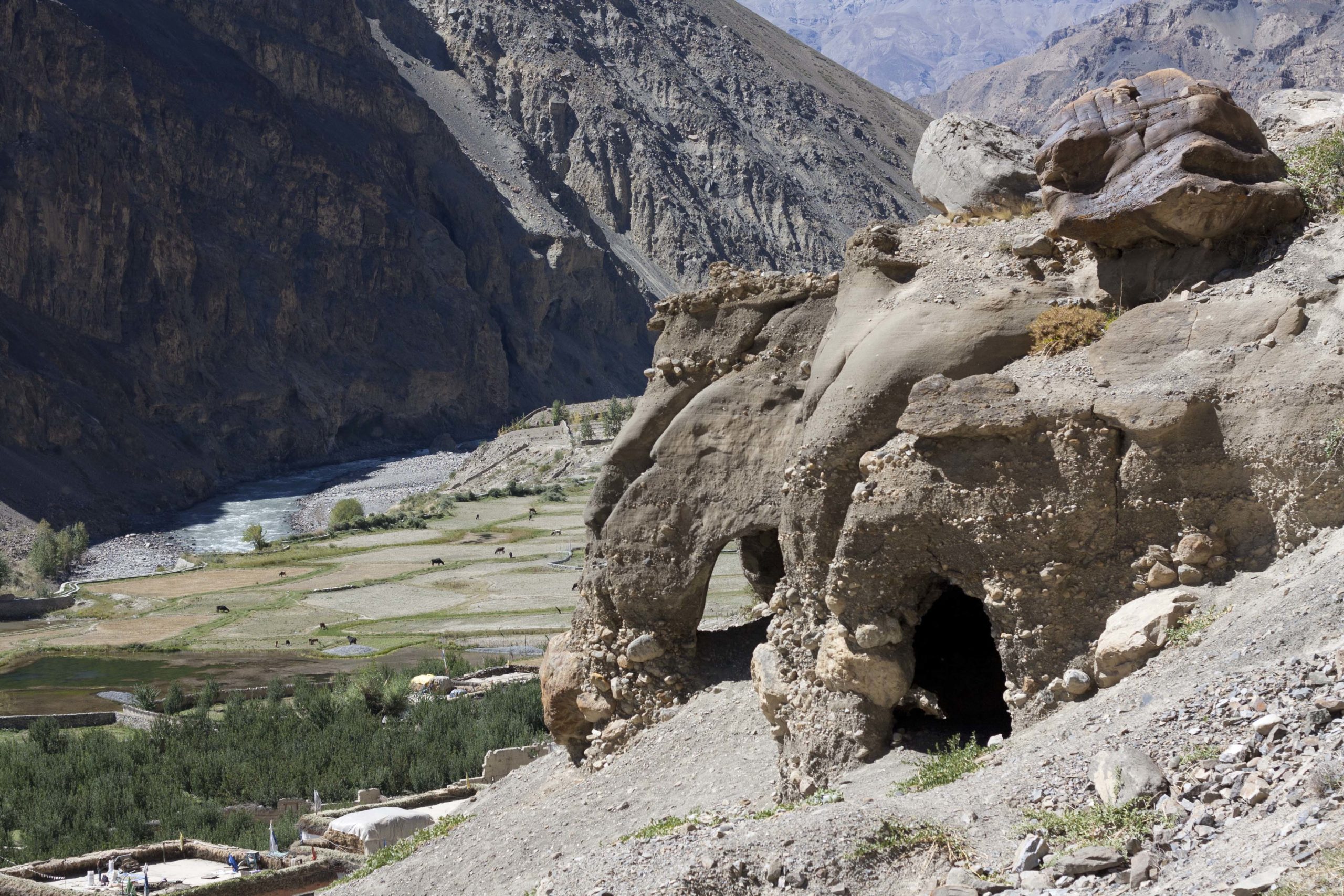
There are a few large caves that may have been used as assembly halls and a few smaller caves that could have been used for lodging and dwelling. Many of these caves have colourful flags of prayer which suggest that monks still use the caves for meditation purposes.
9. Belum Caves – Andhra Pradesh
Belum Caves are the second largest natural caves on the Indian subcontinent, located near Kurnool. The caves were built at a length of more than 4 km due to the Chitravati River’s erosion of limestone. This incredible underground wonder once had been the home of Buddhist monks.
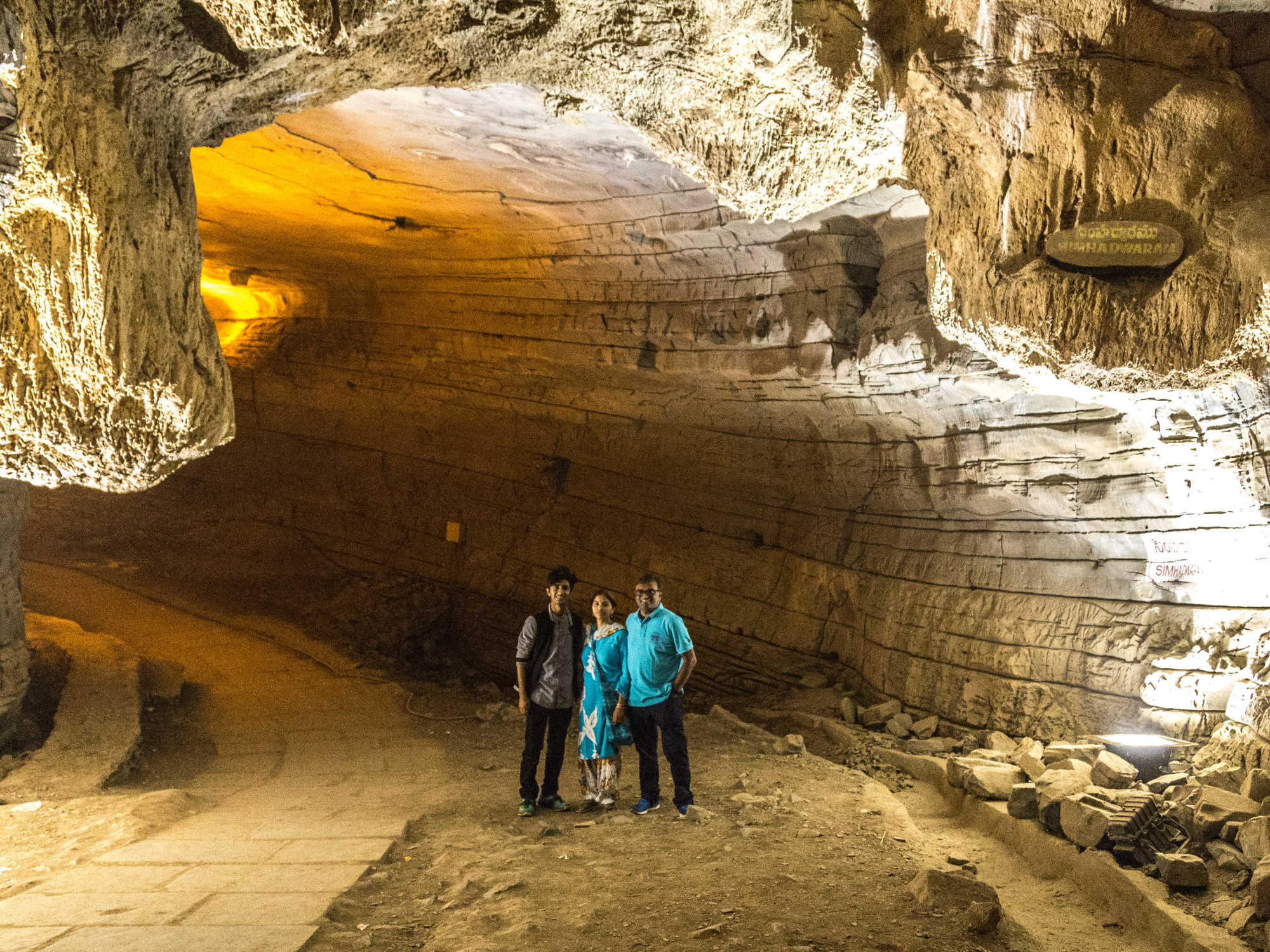
Belum Caves have long walkways, spacious spaces, galleries of freshwater and valves. It is a natural vast underground cave created by an underground water stream. At the point known as Pataalaganga, the caves reach their deepest level.
10. Karla Caves – Lonavala
Karla caves are located close to Mumbai & Pune highways at a popular hill station i.e Lonavala. Many caves are located nearby, but one of the most well known is the Karla Caves. Dating back to 200 BC, they are one of the oldest Buddhist temples in the country and contain stunning arched ceilings and rock-cut architecture that are said to resemble wood carvings.
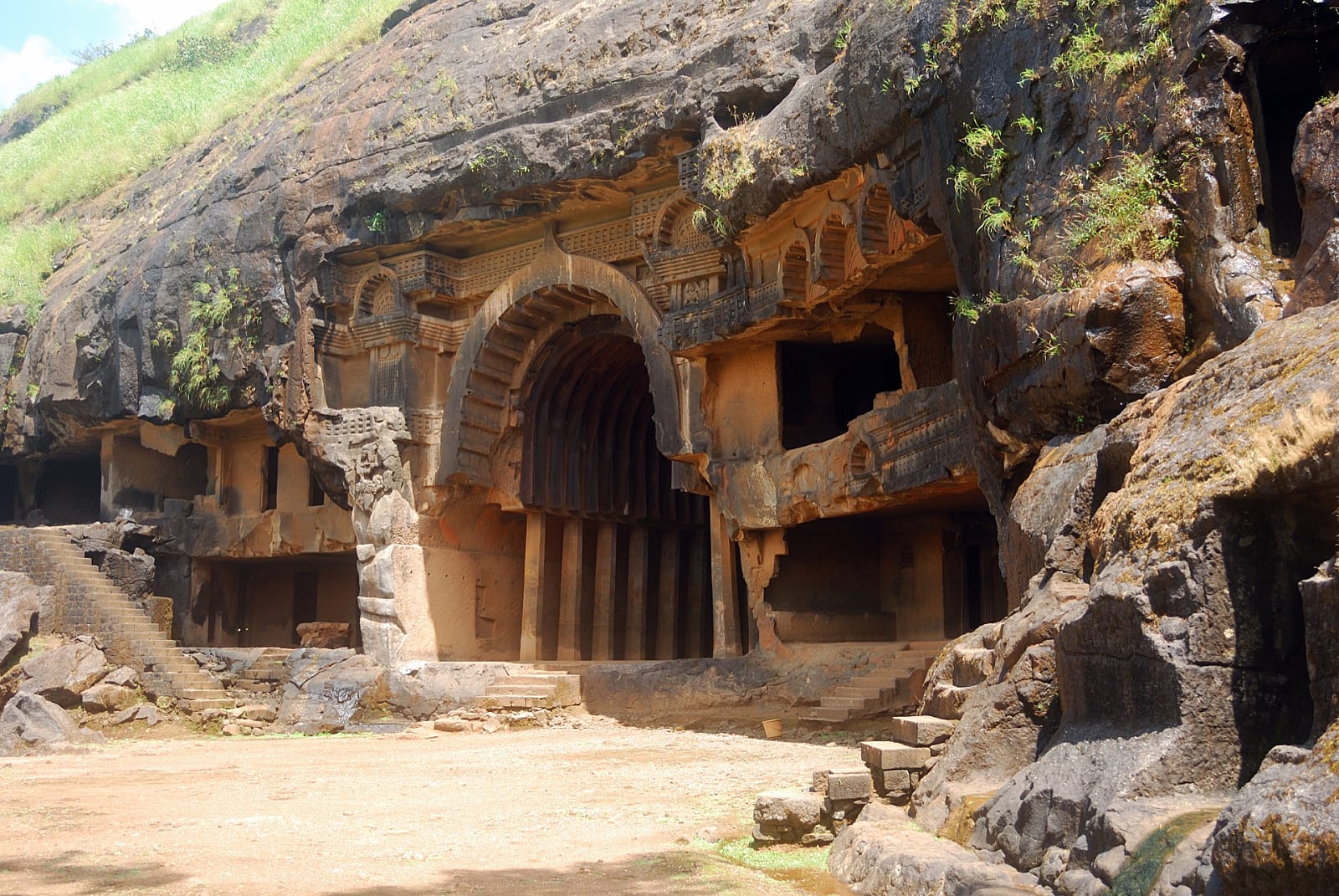
The Karla Caves is the largest Early Buddhist shrine in India, which is adorned in a fashion that its rock architecture resembles that of wooden architecture. A notable feature of the caves is the arched entrances and vaulted interiors, also there is an Ashokan Pillar at the front, with a closed stone facade and Torana in between that catches the attention of the visitors here.
11. Bhimbetka Cave – Madhya Pradesh
This cave in the Indian subcontinent marks the early traces of human existence. Located within the Ratapani Wildlife Sanctuary in Madhya Pradesh state’s Raisen district, Bhimbetka Caves is an enchanting place to explore. The paintings on the wall provide evidence of dance and festivals and were also listed as the World Heritage Site.
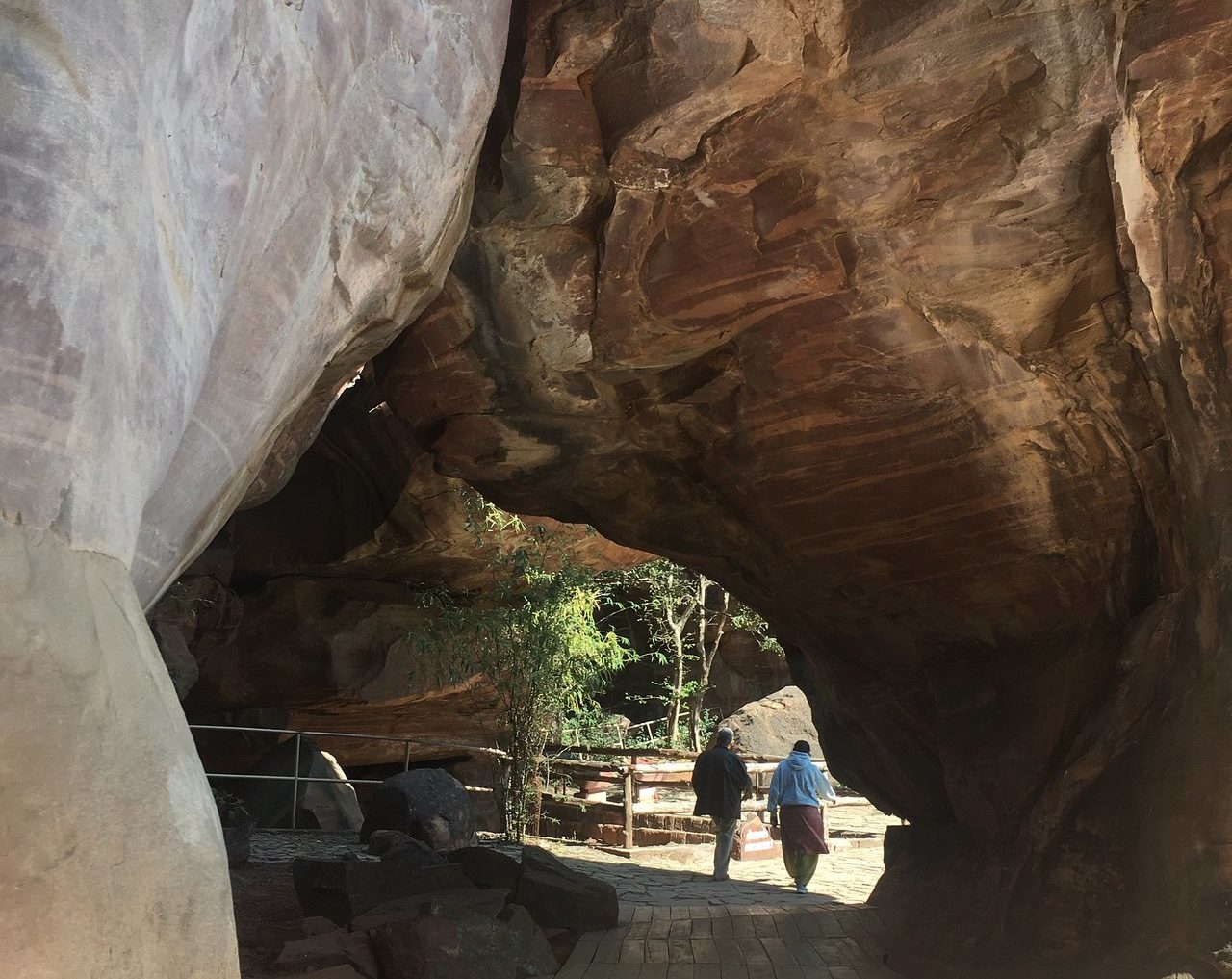
According to historical sagas, it is believed that the Pandavas served as refuges and took shelter at this place and Bhim used to sit at this place though it was given the name Bhimbetka which means Bhim’s sitting place. Bison, tiger, deer, Yakshas figures, magic carts on the sky and tree gods are some of the popular paintings found here.
12. Udayagiri and Khandagiri Caves – Odisha
The caves of Udayagiri and Khandagiri sit on the southern edge of Orissa, Bhubaneswar. The landscape is lined with many ancient caves, but the most prominent caves are in Udayagiri, also known as the Sunrise Hills. Many painted caves are once believed to be inhabited by the aesthetics of Jain.
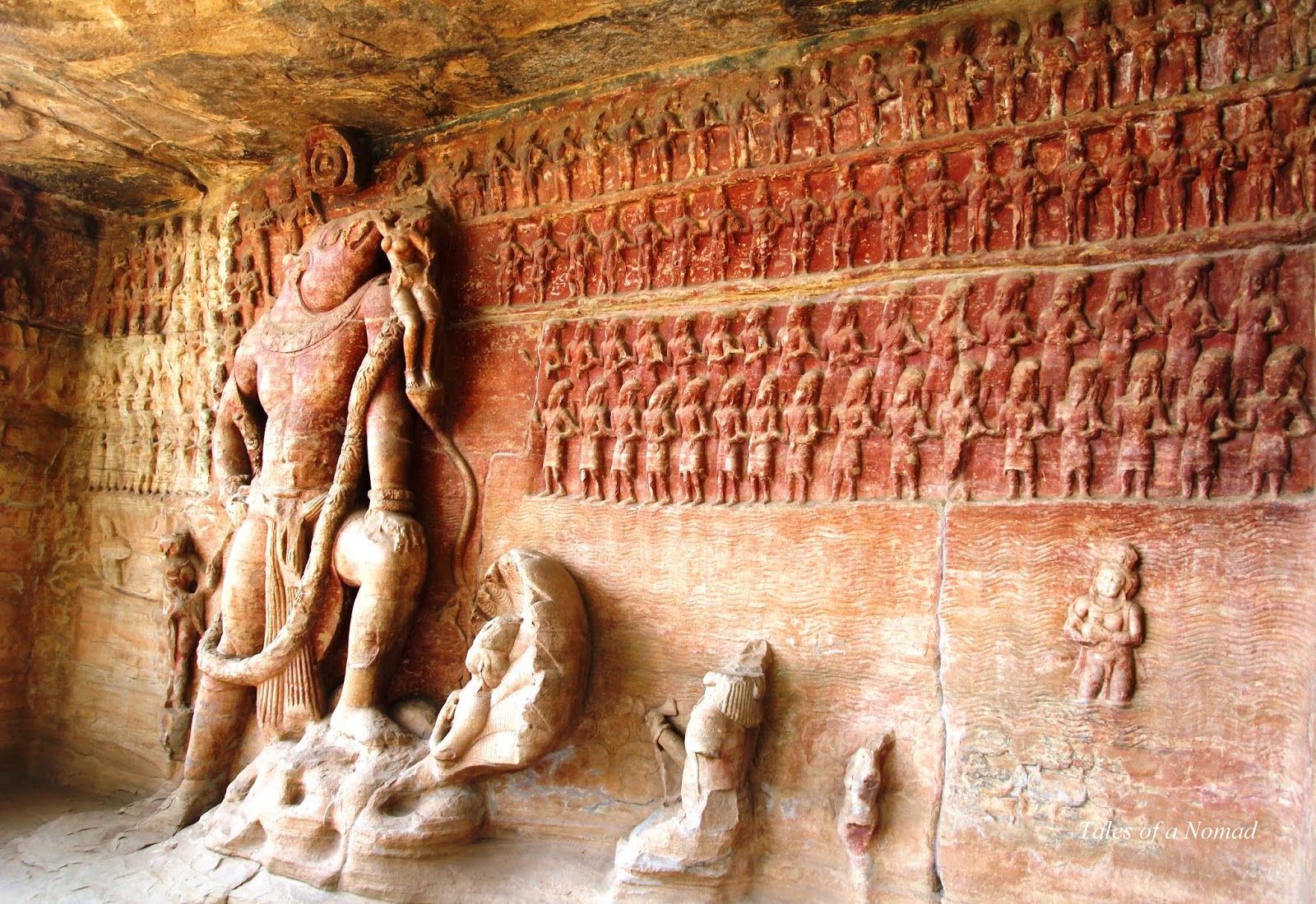
The Udayagiri Caves are ancient structures dating from the early years of the fifth century CE. Such caves put enormous importance on Chandragupta II, who was the ruler of the Gupta Empire from 380-414 CE. Such caves are believed to have been founded in the 4th century.
Also Read: The Ruins of Hampi – Historical & Architectural Marvel of Karnataka

